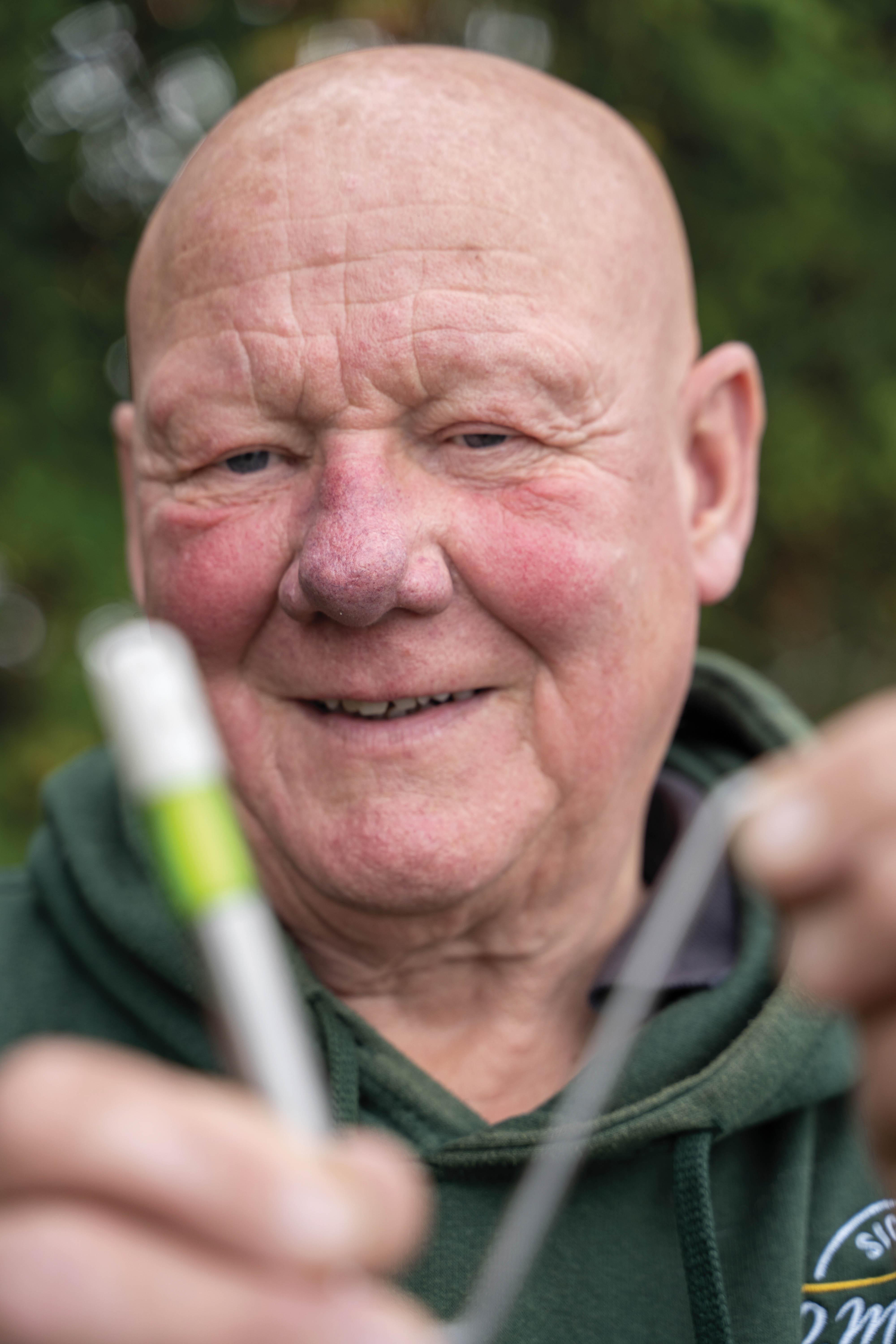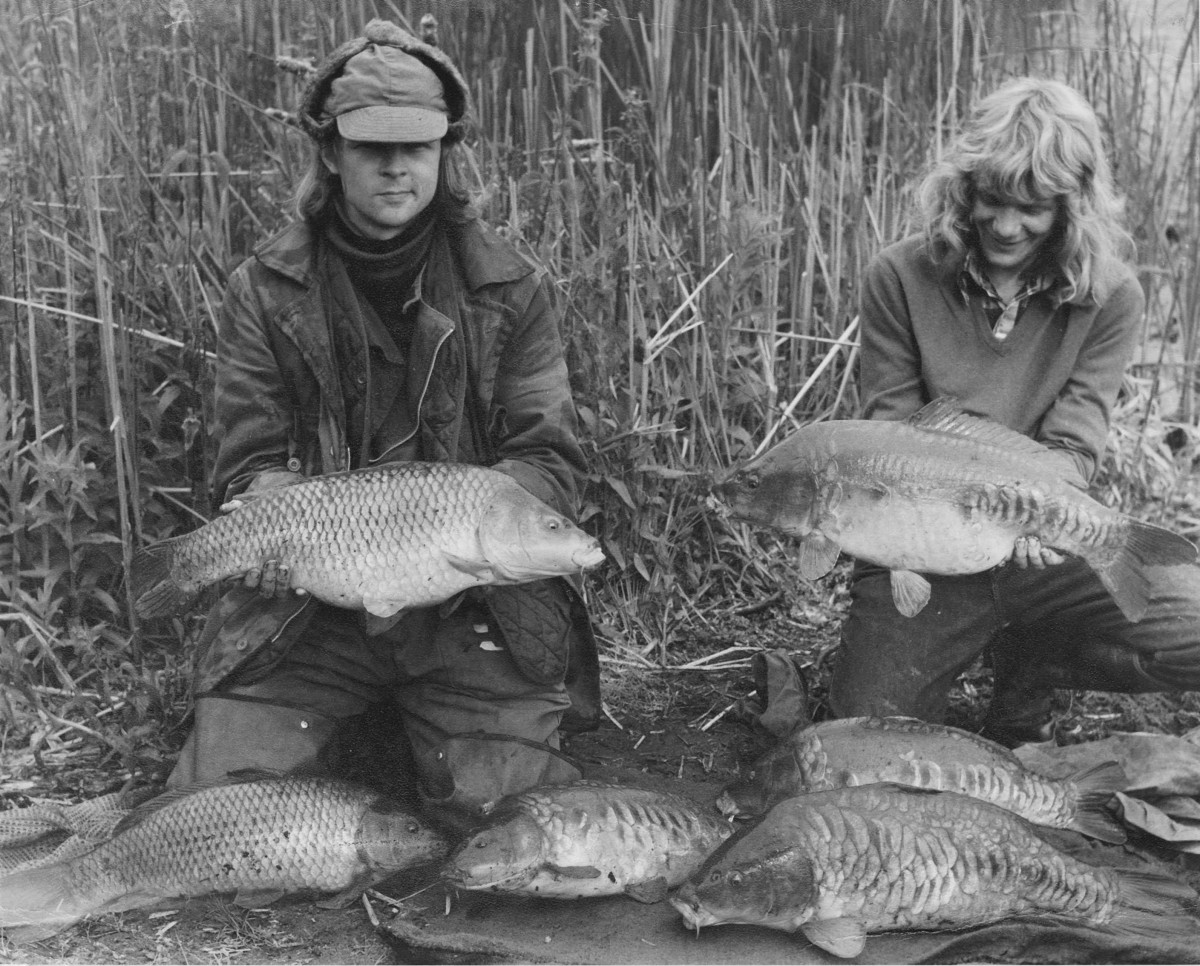
Just A Boy Still Learning - Part 1
Dennis McFetrich has an engineer’s brain the size of a planet. He looks at things differently and creates solutions to problems most anglers didn’t realise they had. It’s a fascinating mind to tap into, and during our two hours on the bank he’s happy to welcome us into that wonderful cranium with a gentle warmth and humility.
You’ve been a carp angler for some sixty years; do you have to push yourself now, and has it become harder?
“It’s still a pleasure to go, but I do find the physicality of it all a little bit difficult to cope with. With all the kit we now use, and with having to get to the swim, the Power Porter’s made a big difference to my fishing… I should’ve had one ten years ago, really!”
Have you ever burnt out as an angler, or experienced peaks and troughs?
“I had a prototyping company for twenty years. We made all sorts of plastic components that go inside cars, like the first Freelander, and the Corsa: dashboards, trims, steering wheels, everything. A long while ago, I developed the use of polyurethane resins. Previously, we had to fabricate panels and stick them all together, but what I developed was a system of using silicone rubber tooling, to simulate all the parts, like the dashboards, the A and B pillars, door trims etc. We could reproduce these from the models we’d made. When I was first involved in all this, I didn’t fish for about three years. This was around 1980, and my work took over my life.”
You always knew that you’d return to fishing, though…?
“Oh yeah. I actually got back into it through trout fishing, because I could go for just a few hours. The casting got me… I loved it. I loved fishing the reservoirs—putting a long line out 35yds can be quite satisfying.”
Did you sell carp gear at all?
“With the background I had, I used to make my own banksticks and bite indicators, for instance. Back then, some items weren’t available in the shops, and so we had to make our own. What really got me into it, though, were the leads.
“When we first used helicopter set-ups, we lost a lot of fish through running down on 10, 12 or 15lb line. I was in France, on the River Lot. I had a take, pulled into it, and the line broke… again! I thought, This is just crazy! I developed a lead with a wire in it and we sold a few of those. Then one day I was at Leslies of Luton and Kevin said, ‘Oh, can we buy those?’
‘I suppose so,’ I said, ‘how many do you want?’
‘I’ll have a thousand of each size.’
‘Ah, okay,’ I said.
“I had the facilities to machine all the tooling, with the CNC mills and lathes. We could produce the tools very quickly, and so about a fortnight later, I took him a thousand of each size, as he’d asked for. They sold well.”
Was that the beginning of MCF?
“Yes, that was the beginning of MCF, really, when we started producing leads. I had the engineering company which I’d started in 1980, and MCF came about in the early 1990s. We had a few financial problems with the original company and we sold it. It’s still running, and it’s one of the biggest of its kind in the world. My wife passed away suddenly, though, and she was a big part of it. I lost my way a bit with it, but it was a different set-up to MCF.
“We make baits still, but the tackle side was sold to Matrix. I was getting to the stage where I couldn’t really cope with it all on my own, having to keep up with stuff being blatantly copied and the like. When I was running it, it didn’t really matter how much time I put into stuff, but after it was bought, with the company then having to fund the development of products, they’d go only for stuff that will sell really well. The development side of things has slowed a bit, because of that.”
What were the key products, and were there any you were particularly proud of which anglers of a certain vintage might recognise?
“Probably the Rattlers. As a bite indicator, I don’t think they can be beaten. I’ve looked at producing different versions, but I keep coming back to my original design.”
What makes them so good? Talk us through the concept…
“The concept is that there’s weight in the body, but that weight doesn’t come into play until you want it to, and it sits on a solid arm. Take sunken lines… what a lot of anglers don’t understand is that once the line’s sunk, water pressure keeps it down. It then takes an awful lot of force to pick it up, and to bring it back up through the water. What I wanted to achieve with the Rattler was that if something moves the lead, the indicator moved, and to do that, you need weight. I didn’t want it to come into play until it was needed, though, because if you hang a heavy bobbin on your line, eventually it will pull your sunken line back up. With the Rattler, however, because the weight is on the arm, it doesn’t lift the line. You can move the weight to where you want it, having it balanced, or even further forward, so that no pressure is exerted on your line.”
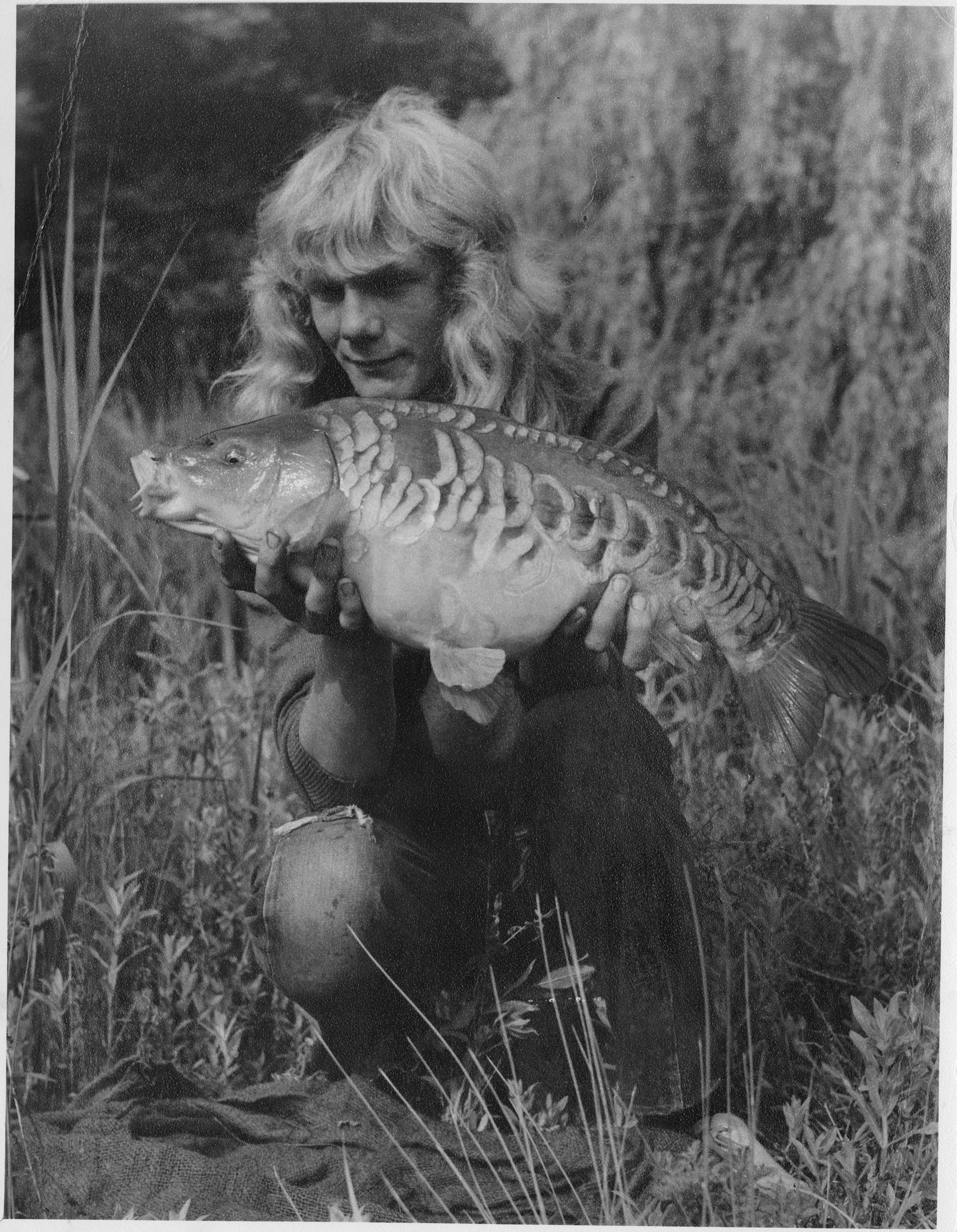
Is bite indication an area carp anglers overlook?
“Yes, without a doubt. It made me laugh at shows when we showed anglers how the Rattlers worked, when they said, ‘Oh, but aren’t they heavy? Haven’t you got a lighter one?’
“As I said, the mechanics are such that the weight doesn’t come into play until it’s needed, when you get a bite. They’d say that the fish would feel it, and I’d say, ‘But the fish has just picked a 4oz lead up, mate; it doesn’t really matter, does it?’
“They couldn’t get their head around it, but the Rattler’s been around a long time, and some anglers now can. Some still question it, but if you look at it, I don’t think there’s anything better. With a line bite it will lift up, and then come back down, whereas with a tiny little bobbin, it’ll stay there, and you might end up picking the rod up when you shouldn’t.”
Does it bring you extra fish?
“Oh, without a doubt, because you can see the difference between a line bite and an actual pick-up. It might bounce about, but it resets; you don’t get that with light bobbins.”
As well as them making it easier to discern liners from bites, do they show you more of what’s going on at the other end?
“Definitely. Because the weight is in balance with the line, the pressure remains as you fish, but with a tiny bobbin, because the pressure of the water holds the line down, the easiest way for the line to move is through itself. As I say, the weight’s there, but it comes into play only when needed.”
Any other products anglers might recall, like the marker floats, for instance?
“Yeah we used to do those. We made them all ourselves, with self-skinning foam. They were tough, but the process of making them, given the materials used wasn’t very nice. To be honest, I can see why Matrix didn’t want to carry on with them. [laughs]
“Then there was the Dumper Lead Clip. It revolutionised the lead-clip system and it was a benchmark. I came up with it around 2007, when I was on Monks Pit with all its weed. Somebody came to me and explained that they wanted to dump the lead when they were fishing Zig Rigs. The water was deep, and you couldn’t reel it all back through on a Zig. The lake I’m fishing now is the same, and a typical example of where you’d use it. This chap wanted to dump the lead, but still have a clip which he could reel through his eyes. I looked at it and thought straightaway that it would work in ordinary fishing situations. We had some wires at work which we used for leads. I adapted one of those, took the design to Monks a few days later and it worked fine. I made the injection moulding tools and then we produced them.
“We had the landing net with the swing-lock design. We sold lots of those and I’m amazed that no one’s copied them. I thought Matrix was going to produce them, but they haven’t. I was fishing Acton Burnell, up in Shropshire, and we had to use the Fox landing nets. The margins were shallow, and so we had to wade out. Getting the landing nets apart was difficult, and I came up with something easier to use there. I looked at the design, and we had them made up in plastic, eventually, in China. They were very popular, but as I say, no one’s picked up on the design.”
Does the copying of ideas frustrate you?
“Originally, I got fairly fed up with it. A company once copied the swing-lock design and I had a conversation with them, as I had a patent on it. Enforcement, though, is a different ball game. I reached a modest settlement with said company. I didn’t ask for much, but I wanted them to acknowledge that they’d copied it and they stopped. In the end, I stopped patenting things because I’m not big enough to go after people.
“It takes a good two or three years to get a product into the market place. Even with a good product, anglers aren’t particularly quick on the uptake. Sometimes there’s a take-up, though. Take the lead clip, for example. I’ve used them since their conception, and that’s how I fish. Convincing others, though, is another matter, and it comes down to the power of marketing. Anglers claimed that it would come off on the cast. Well, it doesn’t, not if you cast it out correctly. They’ll put a rubber on whoever’s lead clip, and as soon as you slide a rubber onto a lead clip, you have a problem. I don’t care how little you slide it on, the mechanics under the water are completely different to what they might be when you’re sitting in a chair on the bank. The Dumper Lead Clip has proved itself as an
outstanding product, really.”
Have you patented that?
“No, and it’s too late now. I could’ve done, but I thought it’d be copied much quicker. One or two people have told me that there are a couple of companies trying to do so now, but it’s nothing to do with me anymore.”
Is it difficult to manufacture?
“No, it’s very simple.”
So are you a little more relaxed about the copying of designs nowadays? As you say, it’s not a problem for you now…
“No, it’s not a problem for me, although I still come up with a few ideas and people either take them on, or they don’t. If they want to go ahead with them, then that’s fine. As long as I can get a little bit out of it to start with, or during the time it’s being produced, then that’s all I’m interested in now. Gone are the days when I want my name all over everything!” [laughs]
When we think of MCF in the early 2000s, we think of half-page adverts in the angling press. They weren’t back-page adverts, or placed in glossy magazines… could MCF have been bigger than it was?
“We were a one-man band, really. We employed half a dozen people at some point, and we manufactured a lot of leads at one time. We did Nash’s for a couple of years and we’d stocked up on them all through one winter. Then he told us that he was going to get them made in China.”
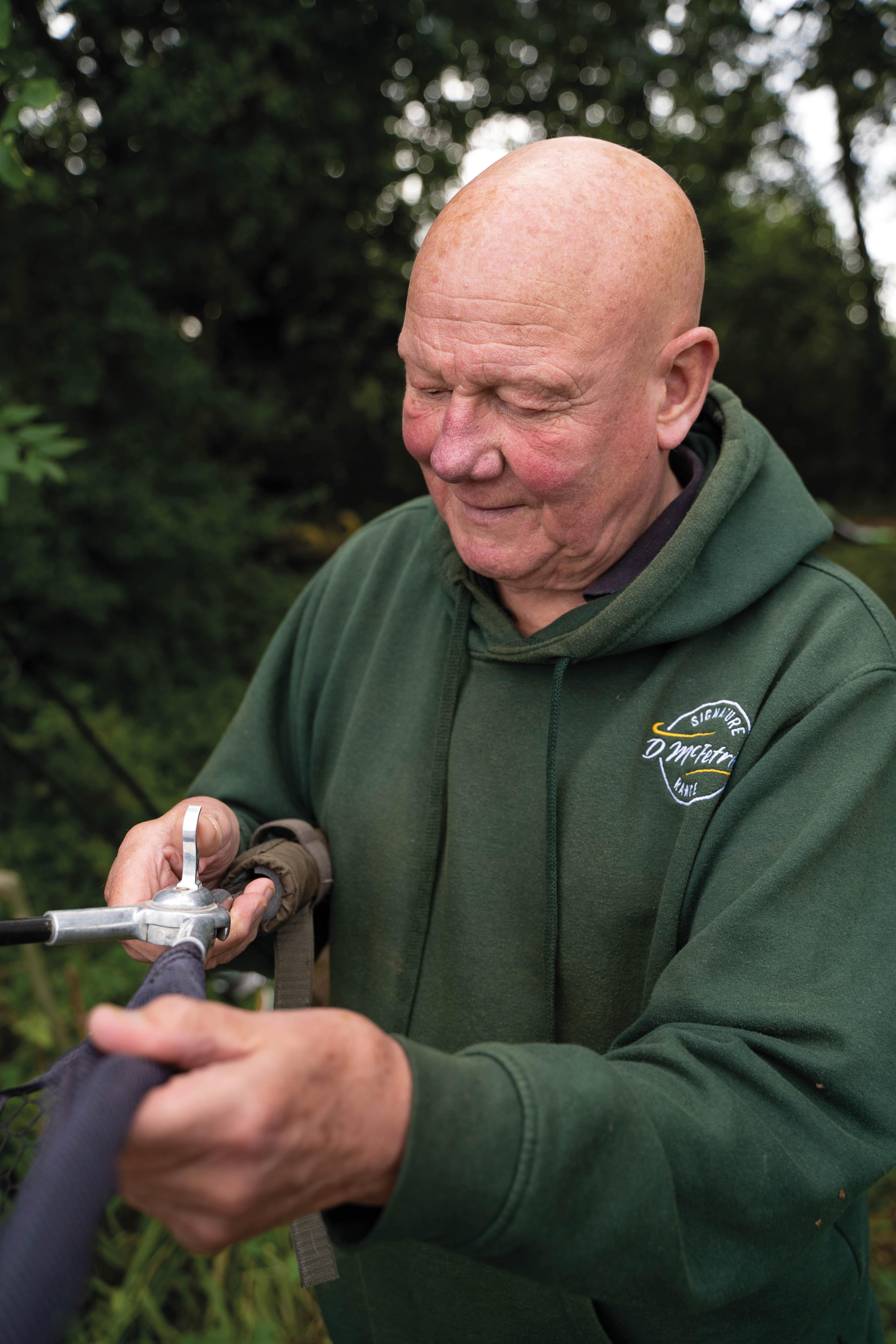
With slick marketing, MCF could’ve been much bigger, then…
“Oh yeah, without a doubt. We had the product, but I’m rubbish at marketing. That has been my failing in everything I’ve tried. I’m happy making the stuff and producing it, but I don’t want to be a front man. I like talking to people and I like passing on what little knowledge I have. At the end of the day, though, I’m not one for pushing myself forward.”
You call it a failing, but is it? Were you happy just ticking along, and was your work-life balance quite good?
“Yeah. It paid its way, but with the right person involved, it certainly could’ve been a lot better, and perhaps two or three people could’ve made a very nice living out of it. I didn’t go down that route, though, and hindsight’s an exact science, as they say.”
What’s your background?
“I’m an engineer and pattern-maker by trade. I did a five-year apprenticeship in a big patternshop in a foundry—there were sixty pattern-makers there when I first started. We made patterns for steel castings. We made the pattern to cast the turret for the Centurion tank, huge jobs like that. I was made redundant and moved to RKB, a company which made a lot of aluminium castings. Their work was nice work, and I enjoyed it.
“A friend of mine was working for a prototyping company which did a lot of work for Phillips, in Eindhoven. They made electrical components, obviously, and they were very busy. My friend asked me if I’d like to go and work with them. I went there, became self-employed around 1975 and worked for them on and off for about five years.
“Later I acquired a small unit in Letchworth, at the Spirella Building. It was a tiny little room. They called it the Dungeon, and it was right at the bottom of a loading bay. That was in 1979 and we set up the company in 1980, when I registered Prototype Projects. We made a lot of first-offs, and a lot of computer casings. Cambridgeshire was beginning to come alive with computers and tech companies and I got in with Rank Xerox. We made polyurethane moulded casings which you couldn’t tell apart from the real ones, so they could run them and test them for their copiers. That kept us busy for quite a long time. We worked with various phone companies as well, like Motorola. The explosion of all that kind of stuff was just incredible.”
You had an engineer’s eye, then… have you always used that with your development of angling products?
“Yeah, especially through my knowledge of plastics. When you prototype something, it’s all about being able to produce it in volume. Our job was to point out the faults in the designs. A whole team of design engineers and skilled toolmakers I worked with would cast their eye over everything.”
You must look at stuff in the carp-fishing industry with a wry smile sometimes, given your background. What products do you admire?
“Tricky! [laughs] I don’t have any allegiances these days, so I can speak freely. I use various companies’ products, like Korda, but I’m fortunate to be in the position to be able to pick and choose the best of what’s out there. My banksticks are stainless steel and I made them myself. The buzzers are ECU, and they’re a proven product.”
When it comes to reels, are you a Daiwa man or Shimano?
“I was a Daiwa man, but now I’m Shimano. As they say, Daiwa make fishing reels, Shimano make gears. The ‘Mags’ (MGS) I have now, are just beautiful reels. Saying that, I have Daiwa reels on my marker rods. I had them rebuilt… I sent them to Daiwa and they told me that they couldn’t service them, but would rebuild them. The Daiwa reels don’t owe me anything, and if the Shimanos hadn’t come along, I’d still be using the Daiwas. I certainly wouldn’t knock them and they’ve been good workhorses. I’m not hard on tackle, but I’ve used those reels a lot, and they’ve caught a lot of big fish.”
And Free Spirit rods…?
“Yes, I do like those. I’m not a big caster. I’ve had several different sets of rods over the years, but I’m not one for changing them, to be honest. The last set I had were Trebuchet Lights. I could cast consistently how far I usually cast, so 100yds, 120, that sort of range. What I couldn’t do with them, though, was feel the lead down if I wanted to fish at 30 or 40yds. Someone on one of my syndicate waters told me that he’d just got the Free Spirit rods. He was quite chuffed with them and he let me have a cast. ‘No,’ he said, ‘hit it!’
“I told him that I could already cast at range, and I explained that I wanted to cast shorter, so feel the lead and cast long. I went for them, and the Free Spirit Hi-S is as good an all-round rod as I’ve used—and they do cast a long way!”
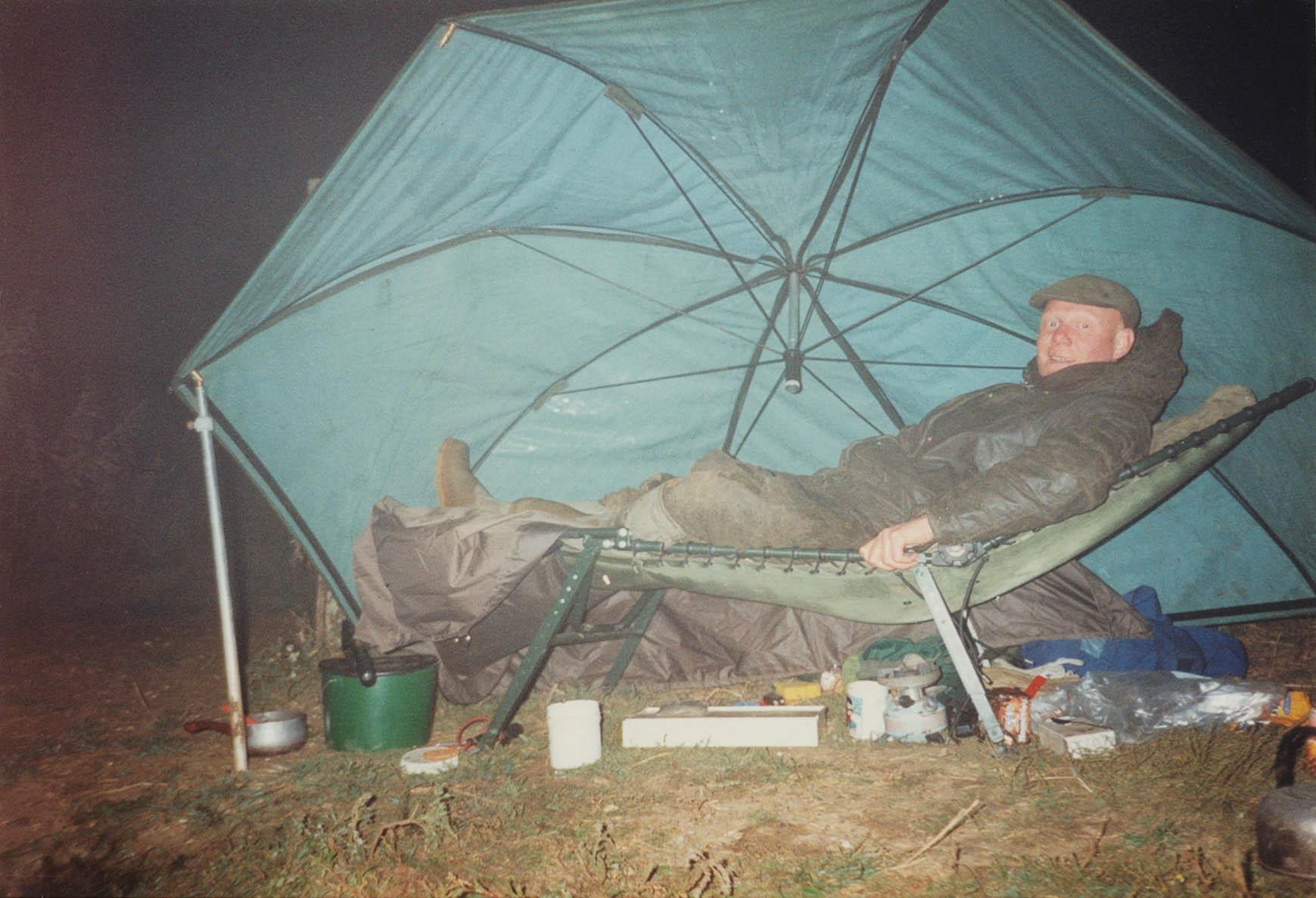
What’s your carp fishing like now compared to when you first started?
“When I started, a ten-pounder was huge. Bigger fish just weren’t there, and when these carp bred and became prolific, they’d get moved. That’s how fisheries evolved. A lot came from Waterways, in Cambridgeshire. Duncan Kay was probably one of the main instigators, bless him. He moved them around and that’s why some of the lakes in Northamptonshire are so good. A number of fish came from a trout syndicate. Carp had bred there and so they were moved. They went to Blunham, and they bred like crazy there. They were moved to Elstow, and they bred like crazy in there, too. They were moved to Oxfordshire, to Linear Fisheries and wherever. They bred in these particular lakes and were then stocked elsewhere.”
You grew up in Bedfordshire. Did you fish locally, or did you follow these fish?
“I didn’t really chase fish then. Time was of the essence and so I fished local waters like Long Reach. The fish weren’t big by today’s standards; they were singles, with some up to twenty pounds. I believe I caught my first carp when fishing for them specifically, when I was eleven, so quite a long while ago—sixty-odd years, in fact.”
That was the early 1960s, then?
“Yeah. The first carp I saw caught was at Arlesey Lake by a guy called Anthony Pogmore. He was the first dedicated carp angler I got to know. He’s still around, I believe, and living in Biggleswade. He had a nine-pounder, or a double, in this big keepnet. He’d fished the night, I walked round and there it was. That was it, for me. From then on, I was a carp angler! I would’ve been ten years old, and I thought, Ooh, I wanna catch one of those! “It wasn’t easy, because they weren’t there. You’d go all year without a bite, but it didn’t put me off. We were using simple leger tactics and bread paste or flake. We’d catch the odd tench, and we just kept going. We started at Arlesey Lake, and then we had The Airman, just up the road from Wissey Pools. There were three carp in Wissey, and in 1970 I started to use sweetcorn. They were elusive fish, but I caught all three in the same afternoon, on sweetcorn… they just climbed up the bank, really.”
Was that a eureka moment, and had you read about sweetcorn somewhere?
“I talked to Jack Hilton, who was on Redmire. He was also fishing Eggets. He told me that he’d put some sweetcorn in and the carp had gone mad on it. After that, I had a chance meeting with Duncan Kay whilst I was fishing for livebaits on the Great Ouse. He told me that he was on a local syndicate and asked me whether I’d like to go and have a look at it. I went, and a lad caught a twenty-pounder, while I was there. This was in January, and he was using goldfish pellets. He’d crushed them and was using them as bait. That again, was an eye-opener.
“Duncan got me a ticket on there. How I could afford it, I don’t know. It was thirty quid, which was a lot of money in those days… I think I went home and robbed the wife! [laughs] I started fishing there in January, and I had four bites in a day, all on sweetcorn. That was absolutely unheard of. I’d taken a whole Efgeeco boxful. It was a lot of bait, but yes, sweetcorn was a complete and utter game-changer.”
Did you then take that approach to other waters?
“Oh yeah.”
Where did your fishing take you through the 1970s and ’80s?
“Fishing was on hold, a bit, from the early ’80s, with work. I started again late ’80s, when I returned to Arlesey Lake. Fish were rolling all over me, but I couldn’t buy a bite. I was probably on sausage meat or something, and they’d all been caught before on it, lots of times—this was pre-Hair Rig days, of course. I bought a load of stuff from the local health food shop, made a simple paste with casein and soya flour, went back to the water one Sunday afternoon and had three bites. Again, it was another eye-opener, and more like cheating! We learned over the years that things like fat content were important.”
Were you influenced by all the stuff regarding high-nutritional value baits?
“No, I wasn’t. I just thought that I needed to look at things differently, and it worked.”
Has bait always been a huge thing for you? You now make bait yourself, so have you always had an interest in it, and do you think that other than location, baits is really the key factor?
“I have, yeah, and if they don’t want to pick up that little round thing, then you’ve had it. To be honest, it doesn’t really matter what rig it’s on. Yes, you’ve got to have a sharp hook, but I’ve gone backwards and forwards with rigs, and okay, in some situations, your set-up can make a difference. I’m not blind to that fact, but a simple Multi Rig is probably one of the best things to have on the end. It all comes down, though, to whether they’ll pick up that little round thing in the first place.”
Has your bait journey all been trial and error, and based on personal experiences?
“Yes. Okay, you get influenced. John Baker, for example, was a good friend, but he was never good with levels, because he doesn’t actually fish much. John would send me stuff. I never wanted to get into making bait until he was poorly, because I always used to get it from him. He told me that he wasn’t going to be making bait again, and I asked him if I could do it, as part of MCF, as an extra thing to do. Obviously things changed, because John’s now doing whatever he does, and good luck to him. He was certainly an influential part of my thinking around quality and flavours—he does sell stuff of very good quality.”
You mentioned levels, but carp can’t talk, and they can’t tell us what are correct levels…
“They don’t need to, because if they don’t like it, they don’t eat it.”
How, though, do you know whether you should put say, three drops in a mix, or a whole spoonful, for instance?
“As my wife says, I was born a carp! [laughs] Less is best, without a doubt. We over-flavour baits, definitely, and by a long way. If you can smell it, then it can put them off.”
What led you to that conclusion? It takes a lot of confidence to actually reduce levels…
“Sitting there without catching anything! John was on this small lake—the name of which escapes me. Anglers were going down the route of a few odd grains of sweetcorn or this, that and the other. I suggested to John that he make up a mix, and he made one up using this particular flavour—I think it was called D88, in the end. It was a flavour which others had also got on to, like John Llewellyn. John made these baits up, and he put in something like 20ml of this stuff. It was horrendous, but because he fishes one night, or two, perhaps, it works for him. The fish respond, but what they don’t do is respond over a long period. With that level of flavour you’d get two or three bites and then that would be it.
“I tried it with a natural ingredient, spirulina. I thought it was going to be a good product, and I was fishing at Duncan Kay and Kevin Maddocks’ water in Northampton. I was catching a lot of fish—for there, anyway—and I thought I’d make some of this bait up with the spirulina. I’d spoken to the manufacturer and they’d assured me that I couldn’t overload it, as it was natural. The first time I went, I caught one of the rare ones, and I was using the bait on just one rod. The next week, I had three on it, I believe. Then, the next week, I thought, Right, all three rods… I never had a bite. It happens, but the following week, again, I never had a bite. I had a bait which I knew they’d eat, but it wasn’t worth continuing with. I questioned what was happening and thought I’d use exactly the same ingredients with another mix, because I knew all their levels were fine, but I cut the spirulina right down. I was using it at about 10 per cent, and I reduced it to about 1 per cent. They liked the bait, but not with the spirulina at that level… their stomachs can’t handle it.
“A lot of people feed protein to dogs, for instance. It can give them major problems, and all it does is pass through them. It’s too rich for them. I think the same happens with a lot of carp baits. People say that they’ll poo it out all over the place, but I don’t believe that’s a good thing. Their digestive system’s different, and I know it’ll pass through them quickly, but I think they need to retain it for a certain amount of time to get the protein from the bait, because it’s all about absorption. If bait goes through them too quickly, then I think it can be a bad thing. Then, it comes down to what bait you’re using, and whether you want a kilo out there or just half a dozen baits.
“I’ve been looking at an HNV base mix, and it’s proving very good. Another angler on the water I’m fishing at the moment, Trevor, has caught some very big fish on it. It’s still in its testing phase, but it might be too expensive to sell, to be honest.”
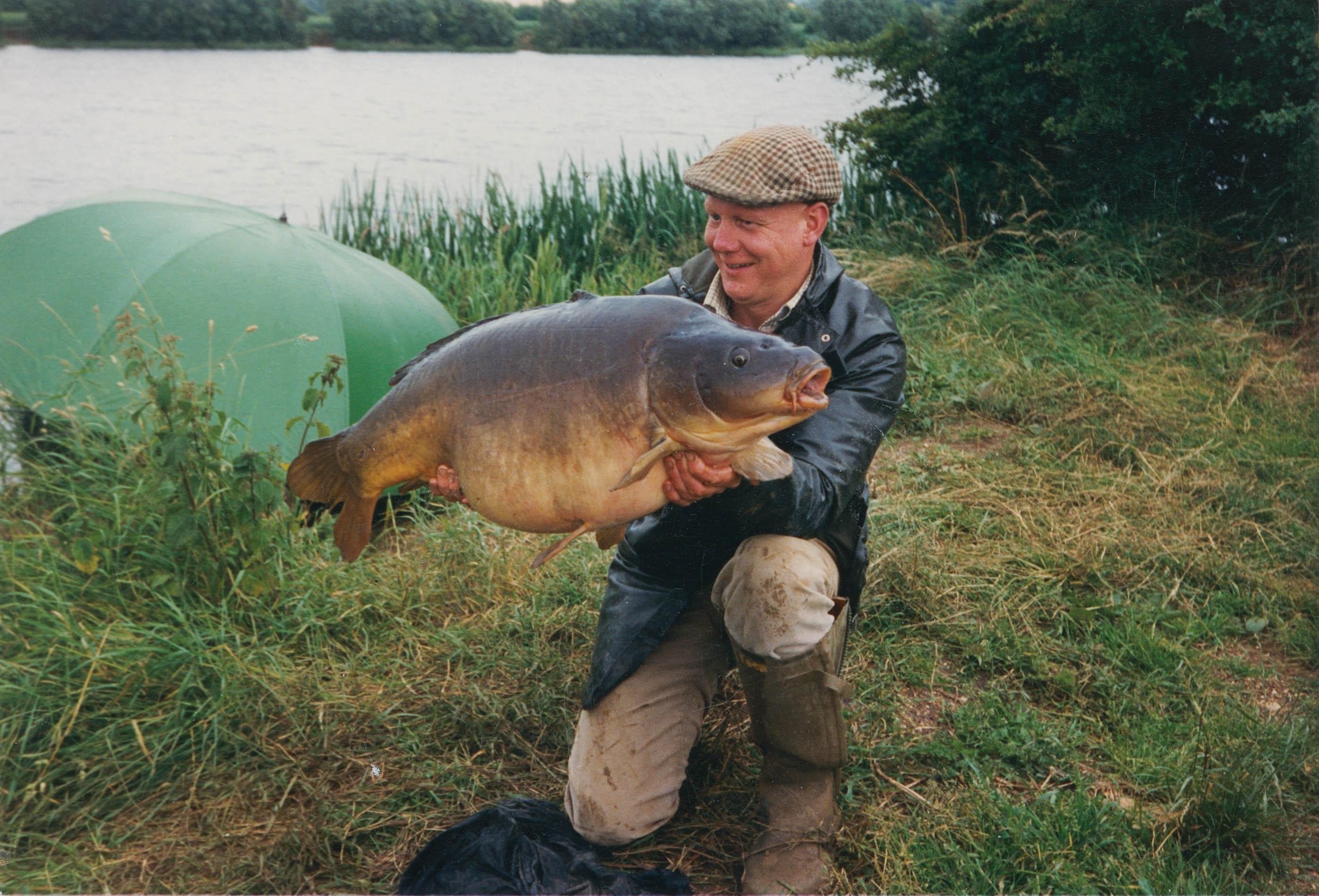
A lot of people say that if you really want the best bait, it would be too expensive to make and sell on a commercial basis…
“You’d have to buy such a large amount of each ingredient to obtain it at a cost which makes the bait viable to produce, but then you also have to guarantee that you can sell it within the duration of its shelf life. Commercially, there’ll always be a compromise. I won’t compromise on quality, at all. Bait is too important for that, but people do.”
Are you always tinkering with your bait?
“Yes, always. But I don’t believe that carp will eat one type of bait at any specific time of year, and I always make my baits as all-rounders, even fishmeals. Fishmeals aren’t a problem, it’s the oils that people put in them. Carp can’t absorb the level of oil some use, in cold-water conditions. Halibut pellets in the winter is the worst example of all, but anglers still use them.”
Do you think that carp know what’s bad for them?
“No. They eat it and then it sits in their stomachs. The major problem is that they then can’t digest it. If you talk to any reputable fish farmer, they’ll tell you that they feed them through the winter, but with barley and corn. They want to keep them feeding, but they don’t give them loads of protein, because it’s not good for them.
“It’s the same with HNV baits. They work well in the winter, but you don’t want to fill them up. It’s like us eating a three-quarter-pound steak… it fills you up for quite a long time. It’s the same scenario. You have to look at what they can eat, and how much. Competition feeding comes into it, though, and it depends on the type of water you fish.”
It’s a difficult question, perhaps, but are you a light, or heavy baiter? What do you take to France for a week, say?
“Twenty kilos, which isn’t a huge amount. Again, though, I’m not fishing for lots of bites, I’m fishing for big fish. I don’t want five kilos out there which two big fish might eat. They’ll eat five kilos of it, but do they want to eat five kilos? The mark of a good bait is fish coming back for it. You shouldn’t have to top it up, because they’ll keep coming back, and your hookbait is pretty much the same as your free offerings. Anglers will make up special pop-ups, but I always make the pop-ups we sell, from the same base mix.
“I use corkballs. I do sell a hard-hookbait mix, and it does go hard… they’re like bullets. But if you just want a normal pop-up, we do them; we just add a floatant to the mix.”
What’s your current range like?
“I’m not a great lover of fishmeals, to be honest. I’ve caught on them, but they taste horrible… I mean, why would you want to eat a fishmeal?” [laughs]
But you are a carp…
“Well, yeah… exactly! I don’t like them. There are some pretty rancid ones about—I won’t name them, obviously. The one I’ve developed myself is called FF3, and it’s fish product-based. There are an awful lot of products now made for the catering industry, and these are used in FF3. It has a very fishy smell, and it’s very subtle, but they do love it. The fish really respond to it, and whilst it has no fishmeal in at all, it’s fishy. There’s no coarse fishmeal in it, but it remains fish-based, with whitefish powdered products. There’s nothing in it that anglers might associate with a so-called fishmeal bait.
“As far as non-fishmeals go, we make most of them. The SCB is a savoury mix, with all sorts of meat meals and cheese meals, along with milk proteins.
“Then there’s the Pink Mix. That has caught carp all over the place, and it’s more of a birdfood-based bait, but everyone’s gone nut-crazy at the moment. I used to use nut-based mixes at Eggets in the late ’80s. I never found them that wonderful, to be quite honest. They give you texture for breakdown, unless you do them with some nice milk proteins. That’s probably what they do, but they’re not really my go-to baits. I don’t use anything nut-based. The Pink Mix is birdfood-based, with some really nice milk proteins in it.”
Do you do shelf-life baits?
“No.”
As an angler, do you place fresh baits above preserved baits, then?
“Yes, 100 per cent. I went to a water in France, Lac de Villedon, and they’d drained it because they’d had a major problem with poisson chat. It’s stream-fed, and you’d never seen as much decaying, horrible bait laying there in front of the swims in your life. It was all preserved, shelf-life bait. It’s now banned, basically. The owner told me that he couldn’t believe it, and the lake’s full of carp. He said that whilst we think that everything gets eaten, it’s not the case, and it was the same with particles. He showed me photos, and whole areas in front of popular swims were covered in decaying bait. I know that preservatives are a lot better nowadays, but then, they did whack it in.”
Are you one for soaks, glugs and pastes?
“No, not really. I had a little dabble with paste wraps, but I had bites and they got away with it. They were picking it up with their lips and I was nicking them. Funnily enough, I was actually doing an interview with someone at the time, and he filmed me playing a couple of fish in, and they came off. It was in the winter, and I thought I’d add paste wraps for a bit of extra attraction. I had two bites, and they both came off. With hard hookbaits they take them back, which is why we use boilies, because we want them to fire them down their necks. With paste, you might get a lot of attraction, but quite a lot comes from the boilie, really.”
Do you use liquid attractors?
“The only time I really use them is in deep pits. I have used them during their development, and I did well on them on a water I fish now with them. I used them whilst developing the FF3 because you can pull fish down with them into deep water. That’s the only time, really, that I use a soak, because there’s enough in a bait to make a carp want to eat it.”
Are you an out-and-out boilie man, or do you occasionally use tiger nuts?
“I’ve caught a lot of carp over the years on tigers, and corn, but I’m nearly always on boilies nowadays. I have faith in boilies, but there are times during the year when fish don’t want to eat them, and last week, out of desperation, I did use tigers. I was up at the Foundry. I’d baited up, and whilst wading out into the margins, I noticed that none of the boilies had gone. I knew there were fish there, so I then scattered less than half a tin of sweetcorn over the area and put a rod over the top. I tripped a couple up, which shows that in certain situations, they choose not to eat boilies.
“I think, especially close in, if it’s not weedy, carp become wary. Most fish have been caught there, perhaps, and lines are harder to lay down or whatever.”
Read Part Two Here!
